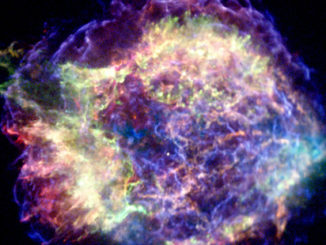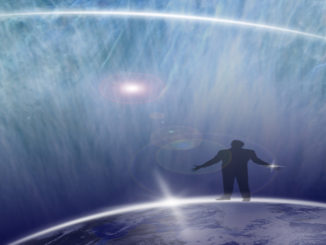Summertime Stargazing
5 Classes:
Course Objectives:
- Learn about celestial objects;
- Learn about telescopes;
- Learn about constellations.
Course Outline:
Class 1: Introduction, Objectives, Celestial Objects.
- Housekeeping.
- Class Introduction.
- Class Schedule.
- Fun Trivia Test.
- Class Votes for Optional/Cloudy Night Topics
- Class Objectives.
- Learn about celestial objects.
- Composition
- Origin
- Impact on Ancient Philosophers.
- History of Significant Discoveries.
- Learn about telescopes.
- Initial Uses.
- Mechanical Explanation.
- How to Choose and Use.
- Learn about constellations.
- List the most popular constellations.
- Discuss their place in mythology.
- How to find them in the sky.
- Learn about celestial objects.
- Celestial Objects.
- Philosophical History of Astronomy.
- Historical Aspects of Man’s Quest for Understanding via Observation.
- Significance of it all.
- Means of measurement.
- Philosophical beginnings.
- Plato.
- Aristotle.
- Kant.
- Intellectual Prerequisite.
- Historical Aspects of Man’s Quest for Understanding via Observation.
- Basics of Cosmology (Optional/Student Selection).
- General Theories of Cosmology (in chronological order).
- Evolutionary Models.
- Steady-State.
- Oscillating Universe.
- Bad Points of Steady State.
- Evidence of Big Bang.
- General Theories of Cosmology (in chronological order).
- Advanced Cosmology (Optional/Student Selection).
- The First Three Minutes@ of the Big Bang.
- Singularity
- Physics of Creation.
- Hadronic Era.
- Leptonic Era.
- Nucleosynthesis Era.
- End of Radiation Era.
- Hydrogen Recombination.
- Galactic Evolution.
- Elliptical Galaxies.
- Spiral Galaxies.
- Irregular Galaxies.
- The First Three Minutes@ of the Big Bang.
- Stellar Evolution (Optional/Student Selection).
- Background.
- Number.
- Distances.
- Physics of Star Light.
- Classification (H-R Diagram).
- Brightness (compared to sun).
- Size.
- Density.
- Color.
- Magnitude (apparent).
- Formal Classification System.
- Star Types.
- Double.
- Variable.
- Evolution.
- Gas Cloud.
- Thermonuclear Fusion.
- T Tauri Stage.
- Main Sequence.
- Red Giant.
- Small Stars.
- White Dwarf.
- Black Dwarf.
- Medium Stars.
- HB Phase.
- Helium Flash.
- Planetary Nebula.
- White Dwarf.
- Black Dwarf.
- Large Stars.
- HB Phase.
- Helium Flash.
- Planetary Nebula.
- Red Supergiant.
- Supernova.
- Type I – Neutron Star.
- Type II – Black Hole.
- Cosmogony (Optional/Student Selection).
- Prior to 1950 – Star passes by.
- Since – Nebular Hypothesis.
- Current Examples.
- Rene Descartes (1644) – Monistic Theory.
- Georges Louis Leclerc de Buffon (1745) – Dualistic Theory.
- Immanual Kant and Pierre Simon de Laplace (Monistics).
- Today – Monastics in favor.
- The Planets.
- Rocky.
- Icy.
- Gaseous.
- The Original Cloud.
- Planetary Formation.
- Sun – Planets – Dust.
- Background.
- Philosophical History of Astronomy.
Class 2: Star Theatre.
- Brief Continuance of Celestial Objects from Class 1.
- Introduction of Star Theatre Lesson.
- (After Star Theatre) Class Discussion of Star Theatre Lesson.
Class 3: Using the Telescope/Observing Session.
- Telescopes.
- Background and History.
- Definition.
- History
- Types of Telescopes and their Optics.
- Refracting Telescope.
- Reflecting Telescope.
- Schmidt-Cassegrain Telescope.
- Choosing a Telescope.
- Identifying Primary Purpose.
- Typical Price Ranges.
- Sources
- Telescopes vs. Binoculars.
- Using the Telescope You Choose.
- Background and History.
- Observing Session #1 – The Circumpolar Constellations.
- Identifying the Constellations.
- Interesting Celestial Objects.
- Mythology: The Story of Ursa Major and Ursa Minor.
- Celestial Navigation.
- Observing Techniques (on the Observation Deck).
Class 4: Observing Techniques/Observing Session.
- Optional Student Celestial Objects Selection.
- Observing Session #2 – The Summer Triangle Constellations.
- Identifying the Constellations.
- Interesting Celestial Objects.
- Mythology: The Story of Andromeda and Perseus.
- The Perseid Meteor Shower.
- Observing Techniques (on the Observation Deck).
Class 5: Observing Techniques/Observing Session.
- Optional Student Celestial Objects Selection.
- Observing Session #1 – The Southern Constellations.
- Identifying the Constellations.
- Interesting Celestial Objects.
- Mythology: The Story of Orion and Scorpio.
- The Planets and the Zodiacal Constellations.
- Observing Techniques (on the Observation Deck).



Be the first to comment